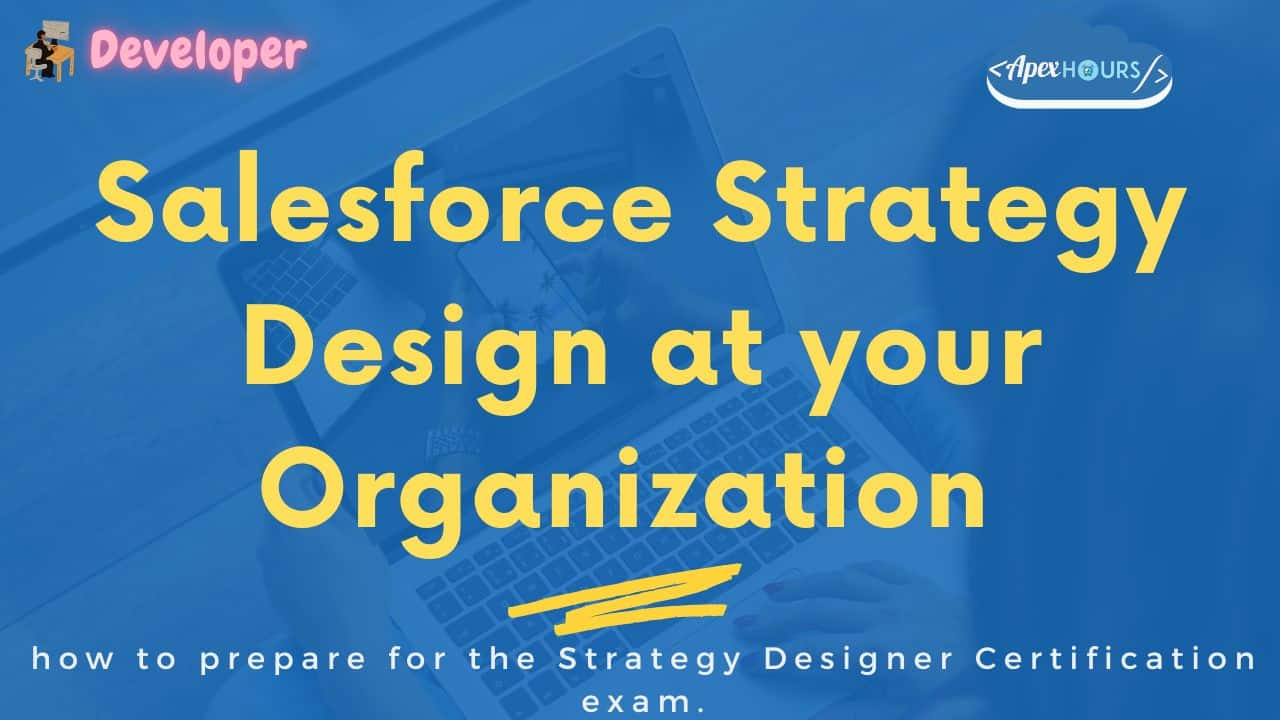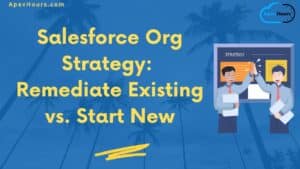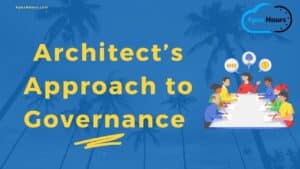Strategy Design methods can offer significant benefits to an organization, including increased alignment and trust, and better business outcomes. But Strategy Design methods can be a big change for some organizations, which may present challenges when these methods are first introduced. This session will provide recommendations for how to begin to use Salesforce Strategy Design methods in your organization.
Let see how to Introduce Salesforce Strategy Design to your Organization
What is Strategy Design?
Strategy design is the practice of helping organizations identify opportunities for human-centered innovation and align behind a vision of what to build.
A corporate strategist typically approaches problem-solving from the company’s point of view and may rely on analytical skills and tools to drive solutions. By contrast, a UX designer typically tends to excel in creative problem-solving and may not have a deep understanding of business vocabulary or concepts. Strategy designers see the entire spectrum. We know when and how to leverage people and organizational capabilities for the best outcomes.
The most common reason that IT projects fail is that the team doesn’t fully understand the needs/problems of their customer.
In other words, the team is trying to build a solution to a problem that the customer doesn’t even have!
- For people coming from an IT background, we spend a lot of time focused on Delivery. Building a high quality solution on spec.
- Discovery process is focused on understanding our stakeholders’ needs.
- Sometimes the distinction between Discovery and Delivery is referred to as “Build the Right Thing” vs “Build the Thing Right”
Strategy Design is about Discovery deeply understanding our stakeholder’s needs and systematically brainstorming ways to address those needs.
The Benefits of Strategy Design in Salesforce
Strategy Design gives us a set of methods/tools for better understanding stakeholders’ needs & building better solutions. A big reason for IT (and Salesforce) project failures is a lack of understanding of stakeholders’ needs…Strategy Design Helps here.
How Salesforce & IT professionals can use Strategy Design (and how it is similar/different from business analysis methods we are already familiar with).
Low Engagement in the middle of our Sales Process
Strategy Design encourages us to view the problem from multiple stakeholders perspectives (customer/client, sales team member, sales management, etc)
Methods that can help us:
- Understand the problem: Journey Mapping (functional, social, emotional lenses)
- Brainstorm Solutions: “How Might We?” statements
Challenges of Introducing Strategy Design
Anti-Pattern #1 : Gatekeepers
No Ideation Process (Leadership dictates Solutions based on “hunch”). Limited interaction with customers/users (“Only Sales talks to customers”). Organizational Silos (“The Business” vs “IT”)
Anti-Pattern #2
Discovery is a waste of time. When are we going to start building?
Anti-Pattern #3 : Waterfall vs Continuous Discovery
Continuous Discovery methods:
- ongoing interviews & feedback from customers/users
- prototypes
- defining & monitoring success metrics after feature Go Live
Anti-Pattern #4
Technology First → Process Second
Techniques for introducing Strategy Design
Show how Strategy Design can address your organization’s core challenges (e.g. reduce risk, increase adoption, faster/more effective GTM). Always Be Clear About Desired Outcomes.
Improve your process diagrams with concepts from Journey Mapping (i.e. consider multiple perspectives, process/thoughts/feelings).
Journey Maps consider Thoughts & Feelings
Journey Mapping: Similar concepts to business process diagram, but Journey Mapping considers the process from more angles: (1) Process / Stages, (2) Actions, (3) Thoughts, (4) Feelings, (5) Touchpoints, (6) Context, (7) Opportunities.Journey Mapping is not Just Functional, it also includes considerations of stakeholder Thoughts and Feelings.

Salesforce Strategy Designer Certification
Salesforce Strategy Designer Certification launched in 2022.
Who Should Consider This Cert?
Applicable to Salesforce professionals who lead projects and work with stakeholders/users. For example: Consultants, Architects
While this certification is popular among consultants, this can be a very powerful toolset for people who serve in an in-house / internal / client-side capacity. For example:
- Salesforce Product Owner, Salesforce Product Manager
- CRM Director
- Director of Business Applications
People familiar with Business Analysis concepts will find some strategy design concepts familiar but will also learn new methods/tools.
Business Analysis is generally focused on functional needs, Strategy Design focuses on functional, emotional and social.
While there are no prerequisites, the following experience is recommended:
- 3 years of hands-on experience as a strategy designer (or similar role like consultant, architect, product manager, UX lead)
- 1-2 years of experience on the Salesforce platform
- 2 years of experience in leading complex projects, including advanced facilitation and consultative skills
Strategy Designer Certification Exam Topics
- Compared to other Salesforce certification exams the Strategy Designer exam requires less technical knowledge of the Salesforce platform itself.
- Focus is on Strategy Design methods and what business scenario(s) each is applicable to.
- Also focused on applying Salesforce features/capabilities to better understand customers & inform strategy design.
- Trailhead:
- Salesforce Strategy Designer Career Trailmix (covers the bulk of the material on the exam)
- Prepare for your Strategy Designer Credentials Trailmix
- Flash Cards: Method Name / Description / Purpose
- check out the list of Salesforce Strategy Design methods in my article Salesforce Strategy Designer Certification: Guide & Tips
Salesforce Strategy Design Video
Summary
I hope this post helps you to understand how to Introduce Salesforce Strategy Design to your Organization and how to prepare for the Strategy Designer Certification exam.





